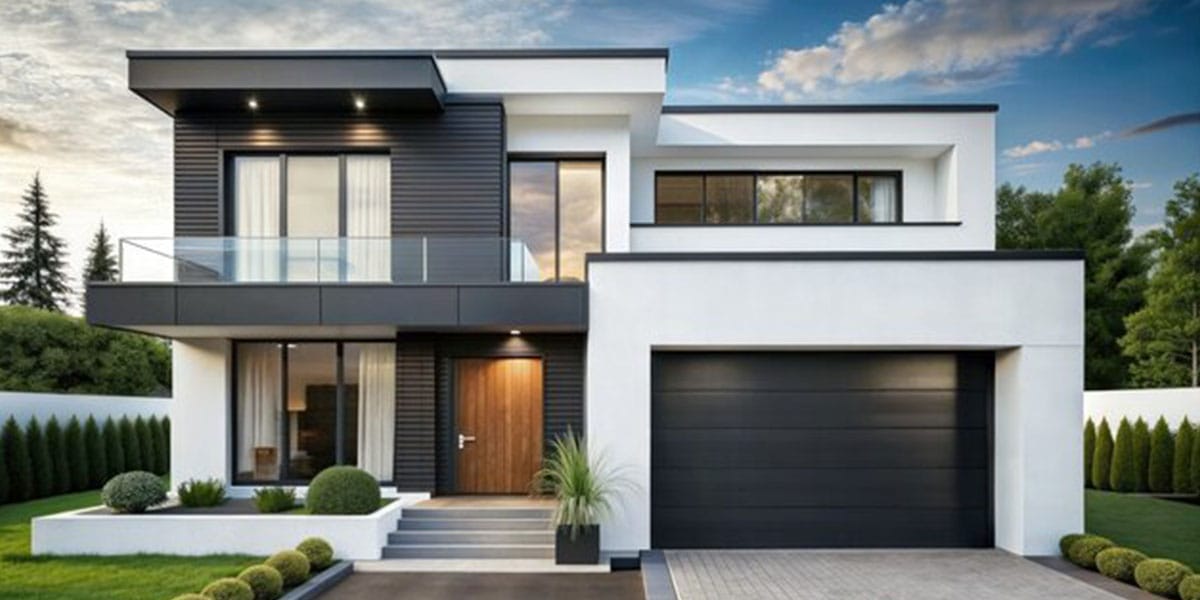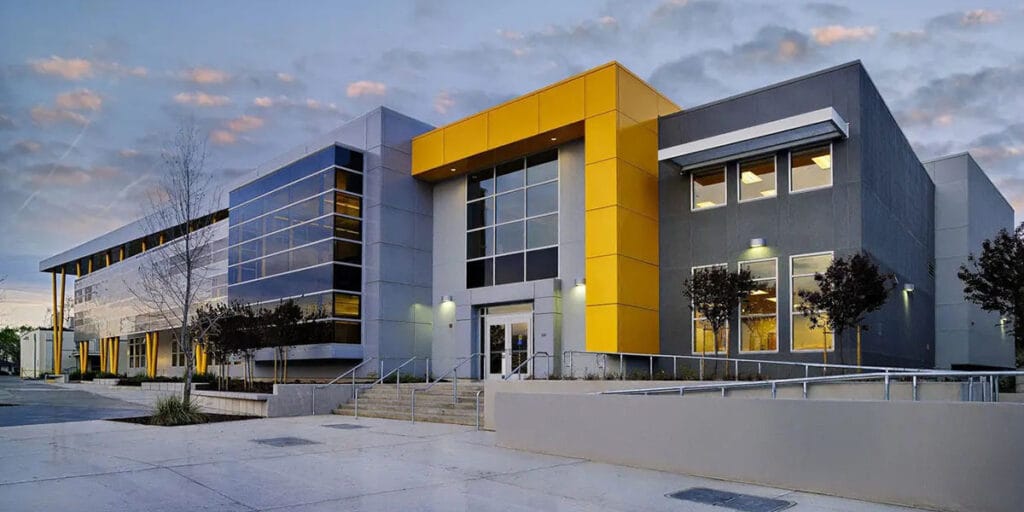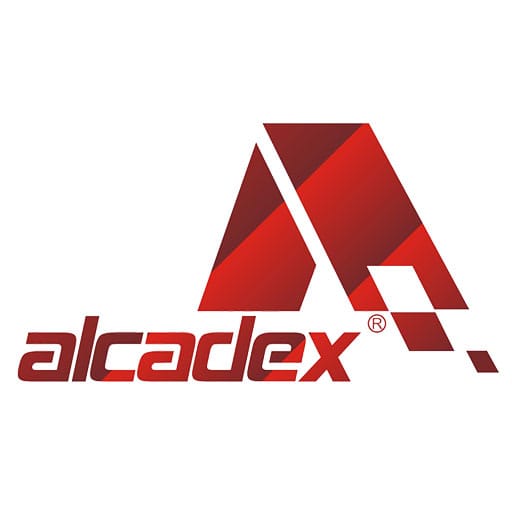
19 Mar What Are Aluminum Composite Panel Wall Claddings and Their Key Benefits
Table of Contents
Aluminium composite panel wall cladding is a modern solution for enhancing buildings. This lightweight material combines strength and stability, making it ideal for construction. You can use it to protect structures from harsh weather while improving insulation. Its versatility allows for intricate designs and unique facades, thanks to a variety of colors, finishes, and textures.
Globally, aluminium composite panel wall cadding accounts for 25% of the market, with demand rising in sectors like retail and healthcare. Their lightweight nature and aesthetic flexibility make them a preferred choice for builders aiming to align with modern architectural trends.
Understanding Aluminum Composite Panel Wall Cladding
What Are Aluminum Composite Panels?
Aluminum composite panels (ACPs) are modern construction materials designed to meet the demands of durability, aesthetics, and functionality. These panels consist of two thin aluminum sheets bonded to a non-aluminum core. This structure makes them lightweight yet strong, ideal for various applications. The aluminum sheets are coated with protective layers, such as polyester or PVDF paint, to enhance their resistance to weather and corrosion.
You’ll find ACPs in both interior and exterior settings. Their versatility allows them to adapt to creative architectural designs, offering flexibility in shaping and customization. Whether for building facades or signage, aluminum composite panels provide a reliable and visually appealing solution.
Composition and Structure of ACPs
The composition of aluminum composite panels contributes significantly to their performance. Typically, ACPs feature:
- Two aluminum sheets, each with a minimum thickness of 0.50mm for exterior use.
- A non-aluminum core, which enhances thermal and acoustic insulation.
- Coatings like fluorocarbon for exterior durability or polyester for indoor applications.
This unique structure ensures ACPs maintain their integrity in extreme temperatures ranging from -50°C to +80°C. Their lightweight nature, averaging 2.5 pounds per square foot, simplifies handling and installation. Additionally, they are environmentally sustainable, with approximately 85% recycled aluminum content. These features make ACPs a preferred choice for modern construction projects.
| Component | Specification |
|---|---|
| Aluminum Panel Thickness | Minimum 0.50mm for exterior use |
| Core Material | Non-aluminum core |
| Coating | Fluorocarbon for exterior use |
| Indoor Panel Thickness | 0.20mm minimum, total 3mm |
| Exterior Coating | Fluorocarbon or polyester |
Common Applications of ACP Wall Claddings
Aluminum composite panels are widely used across various industries due to their versatility. In construction, they dominate the market, accounting for 45.4% of usage by 2024. You’ll often see them in building facades and cladding, where they enhance both aesthetics and functionality. Their lightweight and durable nature also makes them suitable for signage, interior design, and even automotive applications.
Other sectors benefiting from ACPs include:
- Retail and hospitality, where they create visually striking interiors.
- Healthcare, thanks to their non-toxic and VOC-free properties.
- Advertising, where they serve as durable and customizable signage materials.
These panels also contribute to energy efficiency by providing excellent thermal insulation, reducing the need for heating and cooling systems. Their recyclability further supports sustainable construction practices, making them a responsible choice for modern projects.
Key Benefits of Aluminum Composite Panels

Durability and Weather Resistance
Aluminum composite panels are renowned for their durability and longevity. These panels resist corrosion, maintaining their structural integrity even in harsh environments like urban or industrial areas. They perform exceptionally well in cold weather, retaining strength and ductility without becoming brittle. This makes them ideal for regions with extreme winter conditions. Additionally, ACP cladding is engineered to withstand rain and hail, preventing dents and damage over time.
- Excellent corrosion resistance ensures long-lasting performance.
- Strong and ductile in cold temperatures, suitable for cryogenic applications.
- Designed to endure daily exposure to rain and hail without compromising quality.
Their weather-resistant properties make ACPs a reliable choice for both residential and commercial projects. Whether you’re constructing a skyscraper or a retail store, these panels provide unmatched protection against the elements.
Cost-Effectiveness of ACP Claddings
ACM cladding offers a cost-effective solution for modern construction. While the upfront cost of aluminum composite panels may vary depending on the finish and specifications, their lightweight nature simplifies installation, reducing labor expenses. Compared to other materials like brick veneer or stone cladding, ACPs strike a balance between affordability and performance.
| Cladding Material | Upfront Cost Description | Installation Description |
|---|---|---|
| Aluminum Composite Panels | Moderate to high initial investment depending on finish and specifications. | Relatively straightforward, reducing labor costs. |
| Brick Veneer | High, due to the cost of materials and skilled labor required for installation. | Labor-intensive, often leading to higher initial costs. |
| Vinyl Siding | Generally low, making it a cost-effective option for tight budgets. | Easy and quick installation can further reduce initial costs. |
| Stone Cladding | High, as natural stone is expensive and heavy, increasing transportation and handling costs. | Labor-intensive and requires specialized skills. |
The economical nature of ACP cladding makes it a preferred choice for projects requiring cost-effective installation without compromising on quality or aesthetics.
Safety Features of Aluminum Composite Panels
Safety is a critical consideration in construction, and aluminum composite panels excel in this area. These panels comply with stringent building regulations, including fire safety standards. Modern ACPs often feature fire-retardant cores that prevent flame spread and emit low smoke and toxic fumes. This makes them suitable for high-rise buildings and other structures where fire resistance is essential.
- Non-combustible aluminum enhances fire safety.
- Fire-retardant cores reduce the risk of flame spread.
- Low smoke and toxic fume emissions ensure safer environments.
By choosing ACP cladding, you prioritize the safety of occupants while meeting local building codes. Their fireproof properties and compliance with safety standards make them a reliable option for any construction project.
Aesthetic Versatility of ACP Wall Claddings
Aluminum composite panels offer unmatched versatility when it comes to aesthetics. Their sleek, flat surfaces create a modern and polished look, enhancing the visual appeal of any structure. You can choose from nearly 40 standard colors, ranging from neutral tones to vibrant hues, or opt for custom color matching to achieve a unique shade. These panels also come in a variety of finishes, including metallic, pearlescent, and iridescent, allowing you to tailor the design to your specific needs.
For those seeking a natural look, aluminum composite panels can mimic materials like woodgrain, stone, or brushed metal. Digital printing technology further expands the possibilities, enabling intricate designs and graphics to be applied directly to the panels. This makes them an excellent choice for creative projects, whether you’re designing a commercial facade or a striking interior feature.
| Feature | Description |
|---|---|
| Color Options | Nearly 40 different colors available, with customization flexibility. |
| Appearance | Can emulate aluminum, copper, zinc, or stainless steel for design versatility. |
| Characteristics | Clean and modern lines that are durable and timeless. |
With their lightweight nature, aluminum composite panels are easy to shape and install, making them ideal for complex architectural designs. Whether you want a bold statement or a subtle finish, these panels provide the flexibility to bring your vision to life.
Tip: Consider using textured finishes like woodgrain or stone for a natural yet durable alternative to traditional materials.
Ease of Maintenance and Longevity
Aluminum composite panels are known for their hassle-free maintenance and long lifespan. Regular cleaning is all you need to keep them looking new. Use a mild alkaline solution to remove grease, fingerprints, and other stains. Avoid abrasive substances or harsh chemicals, as these can damage the surface. Cleaning during extreme temperatures is also not recommended, as it may affect the panel’s coating.
These panels are designed to last. With proper care and high-quality PVDF coatings, their lifespan can extend to 15-20 years or more. This durability makes them a cost-effective choice for both residential and commercial projects. Their resistance to weathering and corrosion ensures they maintain their appearance and structural integrity over time.
| Maintenance Practice | Recommendation |
|---|---|
| Cleaning Frequency | Regular cleaning to remove grease and stains. |
| Cleaning Solution | Use mild alkaline solutions; avoid harsh chemicals. |
| Cleaning Conditions | Avoid cleaning during extreme temperatures to prevent coating damage. |
By choosing aluminum composite panels, you invest in a material that combines hassle-free maintenance with exceptional longevity. This makes them a practical and reliable option for modern construction.
Why Choose Aluminum Composite Panel Wall Cladding?

Comparison with Other Cladding Materials
When comparing aluminum composite panels to other cladding materials, you’ll notice several advantages that make them a superior choice.
- Durability: These panels resist weathering and maintain their strength in harsh conditions, unlike materials like phenolic panels, which require more maintenance.
- Lightweight: Aluminum composite panels are about 66% lighter than traditional materials like steel or concrete. This reduces the load on structures and simplifies installation.
- Easy Installation: Their lightweight nature allows for easy bending and cutting, making them adaptable to various designs.
- Low Maintenance: Cleaning requires only a simple wipe with a soft cloth, saving you time and effort.
In contrast, alternative materials often come with drawbacks. Phenolic panels, for example, may last longer but demand more upkeep. They also require on-site modifications, which can increase labor costs. Additionally, heavier materials like stone or steel increase transportation expenses and installation time.
Aluminum composite panels offer a balance of durability, ease of use, and cost-effectiveness. Their lightweight design not only reduces labor costs but also speeds up project timelines, especially for high-rise buildings or structures with limited load-bearing capacity.
Real-World Applications and Success Stories
You can find aluminum composite panels in some of the most iconic architectural projects worldwide. For instance, the LACCD East Los Angeles College Classroom Building showcases their ability to enhance modern educational spaces. The VanDusen Botanical Garden demonstrates how these panels blend aesthetics with functionality in eco-friendly designs. Even Spaceship Earth at Disney’s Epcot relies on aluminum composite panels to achieve its futuristic appearance.
Architects and builders frequently praise these panels for their aesthetic appeal, longevity, and safety features. By incorporating them into your project, you align with modern architectural trends while ensuring durability and visual impact. Whether you’re designing a commercial facade or a residential building, aluminum composite panels provide a versatile and reliable solution.
Tip: Consider using aluminum composite panels for projects requiring both aesthetic appeal and structural efficiency. Their ability to mimic materials like wood or stone adds a unique touch to any design.
Aluminum composite panel wall cladding offers numerous benefits that make it an excellent choice for modern construction. These panels maintain their durability in harsh weather, reduce structural load due to their lightweight nature, and require minimal maintenance. Their fire-resistant properties and customizable designs enhance both safety and aesthetics. Additionally, they are cost-effective and eco-friendly, aligning with sustainable building practices.
You can rely on these panels for their versatility and practicality. Whether you aim to create a visually striking facade or improve energy efficiency, aluminum composite panel wall cladding delivers exceptional results. Explore the benefits of aluminum composite panels for your next project and experience their unmatched performance.


